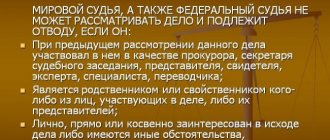New edition of Art. 92 Code of Criminal Procedure of the Russian Federation
1. After the suspect is brought to the body of inquiry or to the investigator, within a period of no more than 3 hours, a detention protocol must be drawn up, in which a note is made that the rights provided for by Article 46 of this Code are explained to the suspect.
1.1. If a defense attorney participates in criminal proceedings from the moment of the actual detention of the suspect, his participation in drawing up the arrest report is mandatory.
2. The protocol shall indicate the date and time of drawing up the protocol, the date, time, place, grounds and motives for the detention of the suspect, the results of his personal search and other circumstances of his detention. The arrest report is signed by the person who compiled it and the suspect.
3. The body of inquiry, the inquiry officer or the investigator is obliged to inform the prosecutor in writing about the arrest made within 12 hours from the moment of detention of the suspect.
4. The suspect must be interrogated in accordance with the requirements of part two of Article 46, Articles 189 and 190 of this Code. Before the start of the interrogation, the suspect, at his request, is provided with a private and confidential meeting with a defense lawyer. If it is necessary to carry out procedural actions with the participation of a suspect, the duration of a meeting of more than 2 hours may be limited by the inquiry officer or investigator with mandatory prior notification of this to the suspect and his defense attorney. In any case, the duration of the meeting cannot be less than 2 hours.
Application to suspects of procedural coercion measures provided for in Articles 91, 92 of the Code of Criminal Procedure of the Russian Federation
Application to suspects of procedural coercion measures provided for in Articles 91, 92 of the Code of Criminal Procedure of the Russian Federation
Detention of a suspect is a measure of procedural coercion applied by the body of inquiry, interrogator, investigator for a period of no more than 48 hours from the moment of actual detention of a person on suspicion of committing a crime, which consists of a short-term restriction of freedom with the placement of a person suspected of committing a crime in a temporary detention center detention (temporary detention center) in order to establish his involvement in the commission of a crime.
The essence of detention is the short-term deprivation of freedom of a person suspected of committing a crime, which, due to its urgency, does not require a court decision for its application.
In accordance with Part 1 of Art. 91 of the Code of Criminal Procedure of the Russian Federation, the body of inquiry, the inquirer, the investigator has the right to detain a person on suspicion of committing a crime for which a sentence of imprisonment may be imposed, if there is one of the following grounds: 1) when this person is caught committing a crime or immediately after its commission ; 2) when victims and eyewitnesses point to this person as having committed a crime; 3) when obvious traces of a crime are found on the suspect or on his clothing, on him or in his home.
If there is none of the above factual data that may be the basis for detention, the investigative authorities may have other data at their disposal indicating a certain person as having committed a crime, and this data may also form the basis for detention, but only if there is one of the four additional conditions listed in Part 2 of Art. 91 of the Code of Criminal Procedure of the Russian Federation, which may include: 1) testimony of witnesses and victims who were not eyewitnesses of the crime, from the content of which it follows that this person is involved in the commission of the crime; 2) testimony of the accused, suspects about accomplices; 3) the results of investigative actions indicating the involvement of specific persons in the commission of a crime; 4) materials of audits, inventories; 5) similarity in characteristics indicated by the victim, witness, etc.
A person is considered a suspect from the moment of his actual arrest.
After the suspect is brought to the body of inquiry or to the investigator, a detention report must be drawn up within no more than three hours (Part 1 of Article 92 of the Code of Criminal Procedure of the Russian Federation). During this time, the necessary data about the detainee must be collected (his identity has been established, etc.) and information about the grounds for detention must be compiled (if they have not been formalized previously, for example, in the case of a person being detained while committing a crime).
In accordance with the requirements of Art. 96 of the Code of Criminal Procedure of the Russian Federation, when detaining a suspect, it is necessary to notify persons specified by law.
The suspect, as soon as possible, but no later than 3 hours from the moment of his delivery to the body of inquiry or to the investigator, has the right to one telephone conversation in Russian in the presence of the inquiry officer, investigator in order to notify close relatives, relatives or close persons about his detention and location , which is noted in the arrest report. If the suspect waives the right to a telephone conversation or is unable, due to his physical or mental disabilities, to independently exercise this right, such notification is made by the interrogating officer or investigator, which is also noted in the arrest report.
The body of inquiry, the inquiry officer or the investigator must notify the prosecutor in writing about the arrest within 12 hours from the moment the suspect was detained. The inquiry officer or investigator, no later than 12 hours from the moment of detention of the suspect, notifies any of the close relatives (spouse, parents, children, adoptive parents, adopted children, grandparents, siblings, grandchildren), and in their absence - other relatives or provide the possibility of such notification to the suspect himself. The notification is issued in writing (certificate) and must be attached to the case materials.
Before the start of the interrogation, the suspect, at his request, is provided with a private and confidential meeting with a defense lawyer.
Assistant Prosecutor
lawyer 1st class V.V. Isaenko
Tactical methods of detention
Detention without prior preparation is characterized by increased tactical risk. The need for such detention arises when law enforcement officers directly detect signs of a crime or the need to immediately respond to a report of a crime received from other sources, i.e. in a situation where there is a real opportunity to immediately capture the criminal, and delay will cause negative consequences. Law enforcement officers have virtually no time for the necessary preliminary preparation, development of a detention plan and rehearsal actions. The choice of a specific method of detention must be made either on the road or already at the place of detention, taking into account the current situation. The choice of detention tactics is based on the situation and location of the criminals. This situation of detention poses a great danger both for police officers and for strangers. When carrying out a seizure, surprise, decisive actions of the detainees, properly organized interaction, and ensuring the safety of others become of great importance. Therefore, police officers must be distinguished by high combat readiness, concentration, and operational thinking. Mastery of hand-to-hand combat skills, skillful use of weapons and special equipment is of great importance.
Detention without prior preparation in no way means the capture of a criminal immediately after his discovery. Even when pursuing a criminal “in hot pursuit,” if the development of the situation allows, it is advisable, before directly capturing the criminal, to establish surveillance over him and choose the most convenient and safe place and time of detention. Unjustified heroism can lead to casualties and enable the criminal to escape. Therefore, the employee who discovered the criminal(s) must first of all realistically assess his strength and, if necessary, call for reinforcements.
Specific tactical methods of detention are selected taking into account the current situation, the number of criminals, their weapons and the chosen place of detention.
Tactical methods of detention in public places after preliminary preparation differ from detention without preparation by greater technical equipment and more detailed awareness. A positive aspect when choosing this type of detention is the possibility of covert rapprochement with the criminal under the guise of passers-by. To divert the attention of the detainee, a loud scandal may be started between law enforcement officers in civilian clothes. A beautiful girl can also significantly weaken the attention of a male criminal. The negative aspects are the danger to random citizens and the limited use of weapons. In addition, the offender can make it appear that he was being unlawfully attacked. Therefore, it is advisable to carry out detention in a place with the least crowd of people or restrictions on the offender’s motor ability. When making an arrest, 2-3 officers secretly approach the criminal. It would also be tactically correct to assign an employee to observe from the side and provide backup.
The peculiarities of detention in open areas are the small number of bystanders and the possibility of using weapons and special equipment. However, approaching the detainee is possible using natural shelters: trees, terrain, etc. When detaining a criminal in a park, wooded area or field, it becomes necessary to detect his exact location, for which purpose the area is combed. A cordon or observation points are established around the territory to block the criminal's escape routes. The entire territory is divided into squares, which are distributed between operational groups. Combing begins at a predetermined signal. Communication between groups is carried out via radio. When combing the area, it is possible to involve citizens who know the area well. The use of service-search dogs is also necessary.
It is very difficult to detain a criminal on the premises. Conducting an arrest is complicated by the need to enter locked premises. Capture and blocking groups covertly move to their original positions. For cover, it is possible to use vehicles and uniforms of repair service workers. There are a large number of tactical techniques for entering a room. This includes entering the premises under the guise of utility workers, calling into the corridor with the help of people whom the criminal trusts, and using flash and sound grenades, entering the premises “on the shoulders” of an accomplice or an outsider, and forcefully entering the premises using special equipment. . It should be borne in mind that in any room there is a greater number of hiding places for a criminal than in open areas. Police officers need to foresee the possibility of a sudden attack on them by a criminal.
Let's take a closer look at several tactical techniques for entering a room, developed taking into account human psychology.
When entering the “live bait”, a person whom the criminal can trust is placed in front of the door peephole, and some motivated reason for his arrival is invented. The capture group must not reveal itself. When the criminal opens the door, entry occurs.
In the event of a “stranger” entry, a young, attractive employee is placed in front of the door. She comes up with an acceptable legend for the parish. After the doorbell rings, the employee calls the owner by name and reports some vague, vague reason for coming (for example, to talk about business). The appearance of a woman, combined with knowledge of the name of the owner of the house, usually does not cause suspicion, and there is a good chance that the door will still be opened.
The “barking” approach is carried out with a guard dog on a leash near the house, but you can also use other people’s animals. The group enters the entrance to the room. When someone comes out to look around while the dog is barking for a long time, he is detained.
When a criminal is detained at his place of work, it is possible, with the help of the organization’s management, to summon the criminal to the most convenient room for detention. However, the criminal must first be monitored, since instead of appearing when called, he may attempt to escape. The help of the detainee’s supervisor can be resorted to only when it is definitely known that he is not involved in the crime.
Tactical techniques for detaining a criminal in transport have a number of features. It is recommended to detain a criminal traveling in transport after stopping and getting out of the transport. In this case, surveillance will have to be carried out at strictly defined places for unloading passengers and luggage. Detaining a criminal arriving by train is complicated by the large space that needs to be monitored, i.e. requires the participation of a large task force. It is considered tactically correct to observe from three points: the “head” of the train, the “tail” and the center of the train.
It is also advisable to detain a criminal driving a car at a railway crossing with a closed barrier, on a previously blocked street.
When vehicles are moving, the amount of free space is minimal and there is a great danger to others. In addition, being detained in the cabin of an aircraft while in the air can lead to depressurization and an accident. If it is absolutely necessary to detain a suspect, the seizure should be carried out while minimizing the danger to bystanders: on an airplane - after the criminal is fastened to the seat; on the train and on water transport (in the compartment and cabin, respectively), taking empty seats by members of the capture group under the guise of random fellow travelers. If the specific location of the criminal on transport is unknown, the arrest should be made using the bypass method, disguised by the bypass, for example, by checking tickets or luggage.
When detaining criminals traveling in vehicles, it is very important to “lead” the criminals by pursuing them and blocking other traffic routes to a pre-prepared detention site. At the place of detention, special means of stopping transport (Ezh-M) are installed, or the road is blocked in some other way, firing points and the location of the capture group are determined, which makes it possible to control the actions of the criminal. After stopping the car with the criminals, using speech amplification devices, the command is given: “Get out of the car and lie down on the ground!” Even if the criminal offers resistance, a pre-selected and prepared place of detention, numerical and technical superiority, and the armament of law enforcement officers will make it possible to maintain control over the situation.
The use of the “ambush” tactical technique is of great benefit. The classic definition of an ambush is a hidden, sometimes disguised location of employees of a crime-fighting agency on the ground or in a room to detain all persons coming there.
The detention of an armed criminal or group of criminals is characterized by an increased level of danger both for others and for the detainees themselves. Therefore, in such a situation, the most important things are to carry out full and comprehensive preparation for detention, the correct choice of tactics and clearly organized interaction. When apprehending an armed criminal, it is very important to ensure the safety of bystanders and the capture team. The safety of citizens is ensured by preliminary blocking of the place of detention and preventing unauthorized persons from entering. To ensure the safety of detainees, they are issued automatic weapons (in some cases it is also necessary to have sniper weapons and equip weapons with devices for silent and flameless shooting, devices for shooting at night) and personal protective equipment: body armor, helmets, plastic shields. It is necessary to think over tactics to prevent the criminal from using weapons. To do this, it is possible to use techniques that distract the attention of the criminal. Approaching covertly, police officers must first block the criminal’s hands, deprive him of the ability to move and confiscate his weapon.
Group detention should be avoided whenever possible by separating criminals and simultaneously detaining them separately in different places. If group detention cannot be avoided, then the police officers during the arrest must have a significant numerical superiority and be well armed.
The legislator provided for the conduct of a personal search of the detainee only as a potential possibility. However, in our opinion, in some cases, depending on the development of the detention situation, a search is transformed from a potential opportunity into a real urgent need. First of all, there is a search for weapons and objects that can be used as weapons. It is recommended to carry out the search itself by laying the criminal on the ground, placing him at an angle or in another position that is inconvenient for the criminal. This will prevent the possibility of the detainee quickly starting active actions, escaping from the hands of operational officers, or otherwise resisting.
Use of technical means during arrest
During detention, various technical means are used. When equipping the group, special equipment, transport, means of observation, communication and speech amplification, recording the progress and results of the arrest, etc. are provided.
Special means for arrest include handcuffs, rubber truncheons, means for opening locked premises, gas aerosols, devices for forcibly stopping vehicles, flash-noise and gas grenades.
When making an arrest, both general-purpose vehicles (cars or buses for transporting personnel, blocking escape routes, etc.) and special-purpose vehicles (ambulances, fire department vehicles, armored personnel carriers, etc.) can be used.
Surveillance equipment includes visual (binoculars, telescopes, night vision devices) and auditory surveillance devices (devices for collecting information from technical communication channels, listening devices, etc.).
Of course, it is necessary to ensure high-quality communication between the various participants in the capture team. For this purpose, the group is provided with standard, car and portable radios. In cases of particularly difficult detention situations, participants may also be provided with hidden portable radios with micro headsets. To conduct negotiations and carry out psychological influence, it is possible to use speech amplification devices: electric megaphones, car loud-speaking installations, etc.
The means of recording the arrest include, first of all, a video camera, sound recording equipment, etc.




